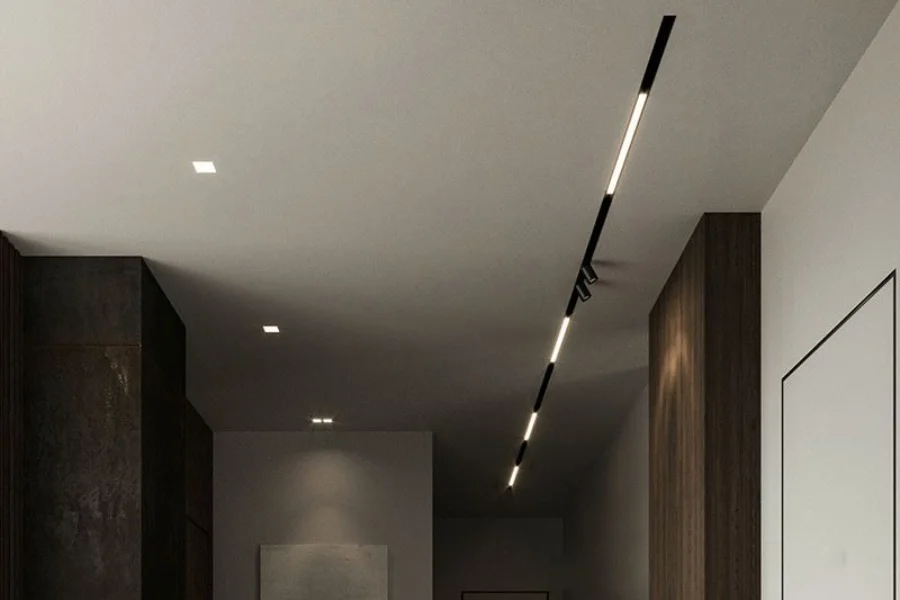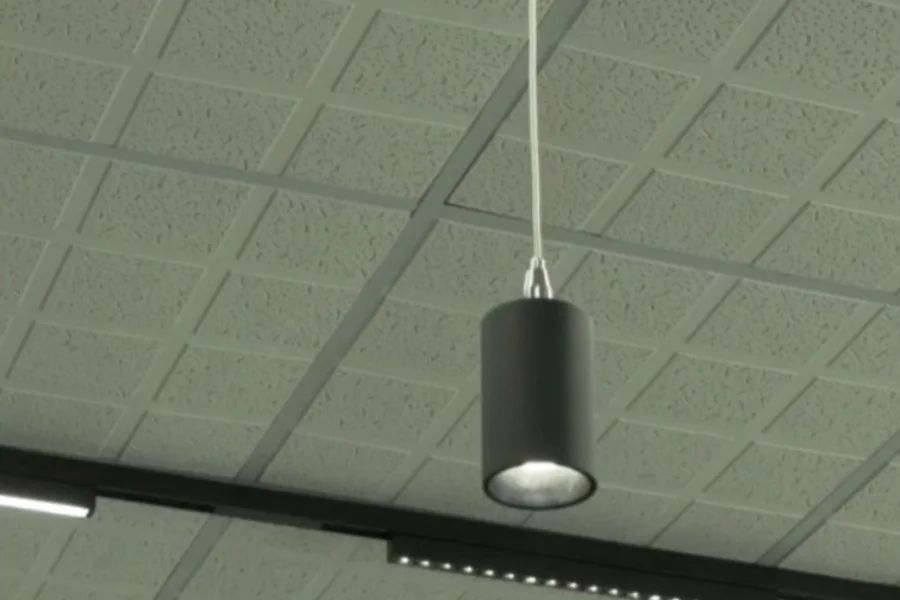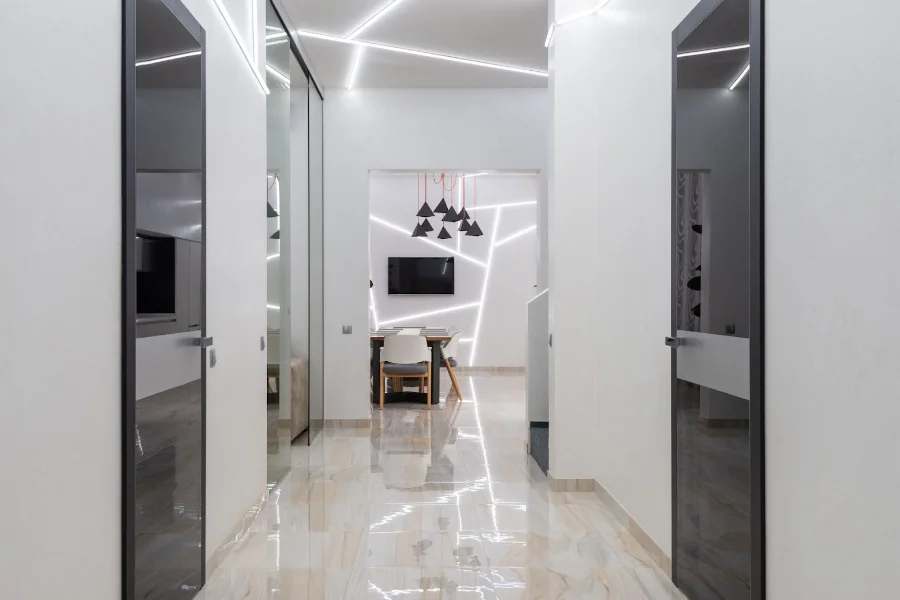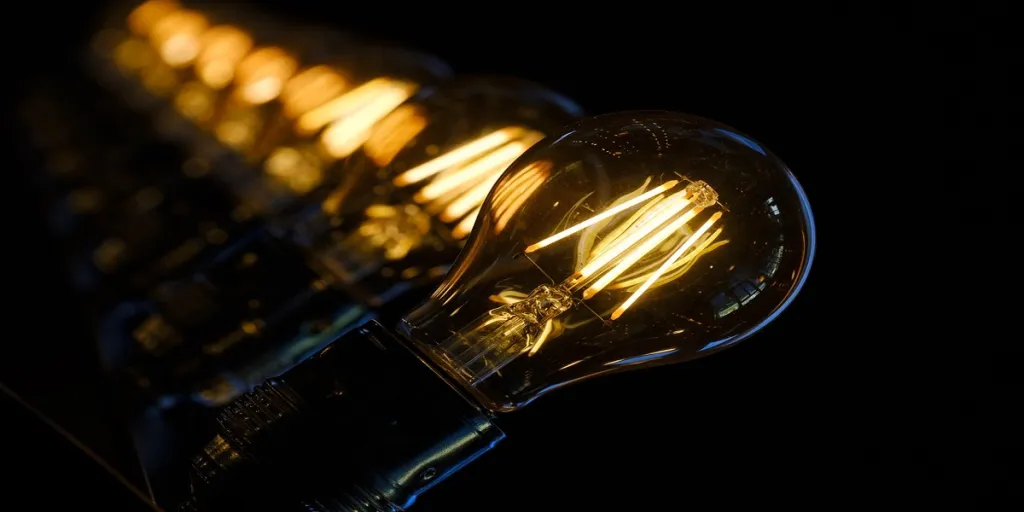Track lights are a type of lighting system in which the light fixtures are attached to electrical wires along a continuous track device.
Their appearance has changed over time to accommodate different luminary configurations for residential and commercial spaces.
Homeowners love them because they are flexible and are movable around the track to light up different spaces like the kitchen, bedroom, drawing room, etc. They remove the need for putting on additional lights.
Business owners also root for them for angled lighting and illuminating specific spots. It is no surprise that track lights continue to soar among commercial and residential customers.
In this article, we will get to know what to look for when choosing the ideal track lights based on customers’ preferences.
Table of Contents
Overview of the track lights market
Factors to consider when selecting track lights
Types of track lights
Final thoughts on track lights
Overview of the track lights market
The global track lights market was valued at US$ 2.69 billion in 2019 and is projected to grow to US$ 3.43 billion by 2027 at a CAGR of 7.7%.
Compared to others, LED lights dominated the market in 2019 and are anticipated to rise quickly over the next few years as well.
Consumers are increasingly choosing them over traditional light sources because of their primary advantages, which include low cost, long life duration, and low power consumption—they consume 80% less energy than other types of track lighting systems.
Region-wise, North America led the market in 2019 and is expected to continue leading throughout the forecast period.
The U.S. and Canada are the key drivers of the market expansion. Experts link the expansion to the region’s broad adoption of LED lighting for energy-saving purposes.
They also expect the Asia Pacific to be a large consumer base throughout the forecast period because of its growing industrial base and consumer electronics industry in China, Japan, South Korea, Taiwan, and India.
Factors to consider when selecting track lights
Shops and homes mount track lights on walls and ceilings for performance, versatility, and flexibility. These lights are perfect for task lighting and directional lighting, such as lighting up particular objects or sections in a museum.
They are an ideal alternative for spaces that cannot adjust traditional lighting, as they are flexible and can easily adapt to furniture rearrangement. Track lights enhance a space’s aesthetic appeal and practicality.
Track type
There are two types of tracks for track lighting: straight and flexible. They are generally 2 to 8 ft long and can be cut into different lengths.
Residential and commercial consumers demand different types of tracks depending on their varied needs, like space and spotlighting.
Light type

There are different types of lights available for track lights which also include LED lights. They have gained immense popularity over the past few years and are used for their adjustable brightness and dimmable features.
LED track lights have taken the market by storm for their cost-saving nature and more directional lighting. Also, there are large-angle lights that illuminate gigantic spaces.
The type of light to purchase depends on the needs of homes and businesses.
Circuit type
There are two types of circuits for track lights: single circuit and double circuit. Single-circuit track lighting runs all track heads on a single circuit, controlling all track heads by a single switch.
A double-circuit track light contains two independent circuits, and each circuit controls a unique set of lights. With a double circuit, consumers can have two separate lighting settings.
Voltage

Light tracks have two different voltage requirements: low voltage and line voltage. This is an important factor that residential and commercial consumers need to be aware of.
Like other lighting fixtures, line voltage track lights are hooked directly into the walls. The majority of line voltage track lights operate perfectly with a property’s typical 110 or 120-volt system. Low-voltage track lights, however, require 12 to 24 volts. These need to be wired into the electrical system of the home or shop using transformers or adapters.
Efficiency
Light tracks that are efficient in saving costs on bills and providing more light are a favorite for both homes and businesses.
LED track lights are often a preferred choice in this case. They do not lose any of the energy they produce when emitting wavelengths like UV or infrared. Using them, consumers pay the bill for the electricity they do consume.
Types of track lights
Different types of track lights serve different commercial and residential purposes. The track lighting system consumers opt for depends on their varied needs and the advantages of the particular track lights.
Linear track lights
Linear track lighting has lights attached to a straight track. They are the most common, practical, and ergonomic track lights. Their lengths vary from 4 to 8 feet, which is long enough to accommodate multiple lights in them.
What makes them a popular choice among home and business owners are their customizability, flexibility, and easy installation.
They are used for accent and task lighting in both commercial and residential settings.
Flexible track lights
Flexible track lights, as the name suggests, are lights fixed on a track that can be curved into the desired shape and (cut into a) desired length.
The lights usually slide along the flexible tracks. They are a brilliant choice for home and shop owners who are looking for customizable and unique lighting options.
Swing arm track lights

Swing arm track light is nothing more than fixed track lighting arms with swivel joints. One or more of these arms are present on swing arm tracks, and while they can swivel on joints, they cannot be moved along the track.
They have a full range of motion because the swinging arms provide a variety of angling options. They can fill in the gaps where various varieties of lamps may not be able to illuminate the entire space.
Further, they work well in places where a straight railing will not fit.
Final thoughts on track lights
Track lights have many advantages for residential and commercial settings and they are a popular choice among property owners seeking customizable, versatile, and affordable lighting options.
The increasing popularity of this lighting stems from the growing number of options available on the market, its versatility, customizability, and energy-saving nature.
Businesses that want to install track lights must consider factors such as tracks, lightbulbs, voltage, circuit, and efficiency.
Visit Alibaba.com for more information on track lights.




